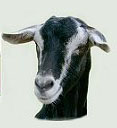|
Getting your first horse or pony
|
Ragwort Ragwort is a very common wild flower in the Asteraceae family. It is native to northern Eurasia and normally found in dry, open places. In Europe it is widely spread from Scandinavia to the Mediterranean but in Britain and Ireland it is considered a weed. It was later introduced to the United States and can be found in the North West and North East states. It can be found South American in Argentina, in northern Africa and on the Asian continent in India and Siberia. New Zealand and Australia consider it to be a weed. Other names for this plant are Cushag, Buachalan Bui or Benweed, Tansy Ragwort, St. James-wort, Ragweed, Stinking Nanny/Ninny/Wily, Staggerwort, Cankerwort, Stammerwort, Dog Standard and Mare's Fart. In the western Unites States is it commonly known as Tansy Ragwort or Tansy. Using that name tansy could be harmful since the tansy plant is used for culinary purposes. Ragwort can grow to .9 to 6.5 feet (0.3 to 2 meters) with an erect stem. The stem may have a few hairs or none at all. The leaves are feather-like or multi-divided and the end lobe is blunt. The leaves are known to have an unpleasant smell to them. Ragwort grows a flower that can be anywhere from .5 to .8 inches (1.5 to 2.5 cm) and they are very dense, flat topped clusters. They are bright yellow in color and have a flowering period from June to November. Toxic to Horses Horses and other cattle can be poisoned by ragwort if they ingest it. Most animals will stay away from this plant because of its bitter taste. It becomes more of a danger when it is dried and accidentally mixed in with hay. This plant is said to attack the animals DNA cells and can cause liver damage. About 3-7% body weight consumption is considered deadly but it has been reported that some animals had a 20% body weight consumption and survived. The best thing to do is avoid the plant all together. If it is in your field have it removed or have it fenced out. Symptoms If a horse or other farm animals has become poisoned some symptoms may include yellow mucus membranes, depression, weight loss, decrease appetite, aimless walking, and lack of coordination. Sheep and goats suffer the same process of liver destruction but at a slower rate than horses and pigs. Poisonous Plants | Horse Health
|
||||
|---|---|---|---|---|---|
The Material contained herein may not be reproduced without the prior written approval of the author. Contents & Graphics Copyright © Horses With Amie (C) 2006-. All Rights Reserved. Our work is not Public Domain. |

